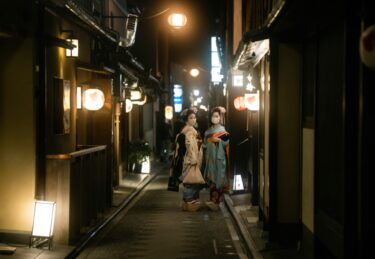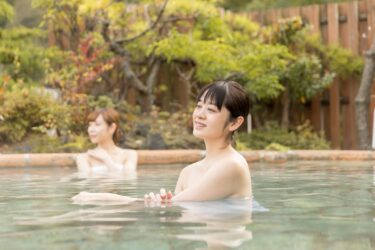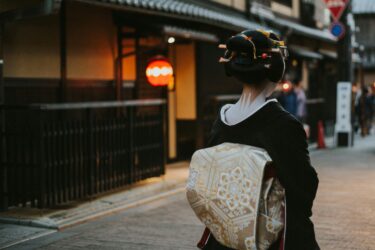Step into the heart of Kyoto, where the old-world charm of Japan still thrives. Gion, Kyoto’s most famous geisha district, offers a glimpse into a rich cultural heritage that has endured for centuries. As you stroll through its narrow streets lined with traditional wooden machiya houses, you’ll feel transported to a time when elegance and artistry reigned supreme.
Gion’s Heritage as an Entertainment District
In the late 16th century, Gion emerged as a hub for travelers visiting Yasaka Shrine. Over time, it evolved into Kyoto’s premier entertainment district, where geisha, known as geiko in Kyoto, refined their craft in traditional arts, music, and dance. Geiko spend years mastering Japan’s classical performing arts, from elegant dances to soulful shamisen performances, preserving a tradition that continues to captivate audiences. Today, Gion remains one of the few places where you can witness this centuries-old tradition firsthand.
When you see maiko and geiko in Gion, it’s important to respect their space. While their beauty and grace may tempt you to take a photo, remember that they are often on their way to appointments or performances. Always ask for permission before snapping a picture, and avoid taking photos in situations where they are clearly not posing or when it’s inappropriate.
Exploring Gion’s Teahouses and Traditional Machiya
Gion’s ochaya (teahouses) offer an exclusive setting where geiko and maiko (apprentice geisha) captivate guests with refined performances and conversation. These exclusive venues are typically invitation-only, but visitors can catch a glimpse of their world at public performances.
The district is also home to beautifully preserved machiya, traditional Kyoto townhouses characterized by their narrow facades and deep interiors. Many of these historic buildings have been converted into restaurants, galleries, and boutique shops, offering a unique blend of past and present.
As many machiya are still homes, respect privacy by avoiding peeking into windows or entering without permission. Keep noise levels low to maintain the peaceful atmosphere of this historic district.
Attractions to See in Gion
Gion is also home to a treasure trove of cultural landmarks. Yasaka Shrine, with its striking vermillion gates, is a must-visit, especially during the New Year and cherry blossom seasons. Nearby, Kennin-ji Temple, Kyoto’s oldest Zen temple, boasts stunning fusuma (sliding door) paintings and an iconic dragon mural.
For a leisurely stroll, head to Shirakawa Street, where willow trees sway over a picturesque canal lined with teahouses. At night, the softly glowing lanterns create a magical atmosphere, perfect for an evening walk.
Don’t miss the Kamogawa River, where you can enjoy scenic views of the flowing water and the city’s skyline. For those seeking unique shopping experiences, the streets leading up to Kiyomizu Temple are lined with shops selling traditional crafts, sweets, and souvenirs—a great way to pick up a piece of Kyoto to remember your visit.
Food to Eat in Gion
Gion’s culinary scene mirrors its history, embracing Kyoto’s tradition of crafting refined, seasonal dishes that highlight the region’s natural flavors. For an authentic Kyoto dining experience, try kaiseki ryori, a multi-course meal featuring seasonal delicacies.
Street food lovers can indulge in yatsuhashi (cinnamon rice crackers) or freshly grilled skewers from local vendors. For sweet tooths out there, try mitarashi dango (grilled rice cakes with sweet soy sauce), or one of the many matcha sweets available.
Getting to Gion
Gion is easily accessible from various parts of Kyoto. The closest train stations are Gion-Shijo Station on the Keihan Line and Kawaramachi Station on the Hankyu Line. Several city buses also stop near Yasaka Shrine, making it a convenient destination for travelers.
Walking through Gion immerses you in its charm, allowing you to appreciate every hidden alley and historic detail up close. Explore at your own pace, soak in the atmosphere, and uncover hidden gems along the way.








